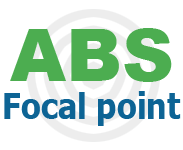
EU Regulation 511/2014 on the Implementation of the Nagoya Protocol
On 16 April 2014 the European Union adopted Regulation 511/2014 to implement the Nagoya Protocol in the EU and to enable Union-wide ratification of the Protocol. The Regulation applies to all use of genetic resources in the EU, and includes obligations on users of genetic resources in the EU.
On 13 October 2015 the European Union adopted the Commission Implementing Regulation (EU) 2015/1866, which lays down detailed rules on the implementation of Articles 5, 7 and 8 of Regulation 511/2014. On 27 August 2016, a Guidance document was published by the European Commission on the scope of application and the core obligations of Regulation (EU) 511/2014. On 12 January 2021, a revised Guidance document was published by the EC, providing more detailed information and practical examples on the scope of application and the core user obligations of Regulation (EU) 511/2014.
Legislation can apply to all users of genetic resources
A wide range of actors in the European Union, including academic researchers and companies from different business sectors (for example, plant and animal breeding, bio-control, pharmaceuticals, cosmetics, and food and beverage industries) use genetic resources for research and development purposes. Some also use traditional knowledge of genetic resources. Actors at the beginning of the genetic resources value chain (mostly collection holders and academic researchers) are in direct contact with the laws and authorities of provider countries. They pass on samples of genetic resources and initial research results to other users engaged in basic or applied research. Actors situated at the end of the chain engage in often lengthy development activities that require significant investments with uncertain outcomes. They depend largely on material and information passed on to them from earlier users in the chain. Some of this transfer of material and information is subject to the ABS provisions. A clear framework of obligations for all users of genetic resources throughout the value chain is essential for creating an enabling context for facilitated access to quality samples of genetic resources with high legal certainty. The above-mentioned EU regulation is aimed at implementing the Nagoya Protocol for the Union. Its full title is: Regulation No. 511/2014 of the European Parliament and of the Council of 16 April 2014 on compliance measures for users from the Nagoya Protocol on Access to Genetic Resources and the Fair and Equitable Sharing of Benefits Arising from their Utilization in the Union.
Entry into force and application
The Regulation entered into force on 9 June 2014, and is applicable from the date on which the Nagoya Protocol entered into force for the European Union, 12 October 2014. An exception is made for Articles 4 (Obligations of users), 7 (Monitoring user compliance), and 9 (Checks on user compliance), which became applicable one year after the Nagoya Protocol entered into force in the EU, on 12 October 2015.
Scope
The Regulation applies directly to and in all Member States of the EU, and as such can apply to all institutes, companies and citizens who use genetic resources falling within the scope of the Regulation. Different considerations together determine whether this Regulation applies to you or not. It applies to genetic resources over which States exercise sovereign rights and to traditional knowledge associated with genetic resources. It also applies to genetic resources and traditional knowledge associated with genetic resources to which Access and Benefit-Sharing legislation or regulatory requirements of a Party to the Nagoya Protocol are applicable. And it applies when those resources or the knowledge associated with them are accessed after the entry into force of the Nagoya Protocol for the European Union (12 October, 2014).
In other words: it applies to genetic resources used by EU-users accessed on or after 12 October 2014, that come from a Party to the Nagoya Protocol that requires PIC or has other rules governing access to those materials. The same applies to associated traditional knowledge. The Regulation does not apply to genetic resources falling under specialised international ABS instruments (the International Treaty on Plant Genetic Resources for Food and Agriculture (ITPGRFA) and the Pandemic Influenza Preparedness (PIP) Framework). See also the discussion of due diligence below.
To help you determine if your activities with genetic resources are in scope of the EU ABS Regulation, the ABS Focal Point has developed an interactive tool. Find the help tool on this page.
Due diligence
Due diligence can be defined as an investigation prior to signing a contract, or certain standards of care applying to an act. In the context of ABS, due diligence means that you did your very best to establish which Access and Benefit-Sharing conditions apply to the genetic resources you wish to access and that you have taken care to meet these conditions.
Users of genetic resources have to be able to show where necessary that they have applied due diligence in fulfilling their benefit-sharing obligations stemming from access to these resources. Article 4 of the EU Regulation describes which information users need to seek, keep and transfer in order to comply with the due diligence obligation. This includes formal documentation from the country where you acquired the genetic resources and information about the genetic resources accessed, the time and place of access and the ways in which the resource may be used.
Users acquiring plant genetic resources for food and agriculture (PGRFA) that are listed in Annex I to the International Treaty on Plant Genetic Resources for Food and Agriculture (ITPGRFA) and have been placed in the multilateral system (MLS) of the ITPGRFA are not covered by the EU Regulation. This exchange will always be on the basis of the standard material transfer agreement (SMTA) of the MLS.
On the basis of their sovereign rights, countries can determine how access to their genetic resources is organised. A country can opt to apply the (conditions of the) SMTA to its PGRFA. It may then determine that PGRFA under its management and control and in the public domain, which are not listed in Annex I to the ITPGRFA, will also be subject to the terms and conditions of the SMTA for the purposes set out under the ITPGRFA. When users acquire PGRFA from a Party to the Nagoya Protocol that applies the SMTA for its PGRFA in this way, even for material not listed in the Annex, they shall be considered to have exercised due diligence.
Best practice
Registered collection
Implementing Regulation (EU) 2015/1866
On 13 October 2015 the European Union adopted the Commission Implementing Regulation (EU) 2015/1866, which lays down detailed rules on the implementation of Articles 5 (Register of collections), 7 (Monitoring user compliance) and 8 (Best practices) of Regulation 511/2014. Implementing Regulation (EU) 2015/1866 entered into force on 9 November 2015.
Implementing Regulation (EU) 2015/1866 contains rules with respect to the register of collections (Art. 2), the request for inclusion in the register and notification to the Commission (Art. 3), checks on registered collections and remedial actions (Art. 4), the due diligence declaration at the stage of research funding (Art. 5), the due diligence declaration at the stage of final development of a product (Art. 6), transmission of information on due diligence declarations (Art. 7), application for recognition of a best practice (Art. 8), recognition and withdrawal of recognition as best practice (Art. 9), information on subsequent changes to a recognised best practice (Art. 10), and deficiency in best practice (Art. 11).
The annexes list which information has to be provided with a request for inclusion in the register of collections (Annex 1) and with an application for recognition of best practice (Annex 4), and provide templates for a due diligence declaration to be submitted at the stage of research funding (Annex 2) and at the stage of final development of a product (Annex 3). Due diligence declarations can be submitted through the EU-wide tool DECLARE.
Guidance document
On 27 August 2016 a Guidance document was published by the European Commission on the scope of application and the core obligations of Regulation (EU) 511/2014. A revised Guidance document was published on 12 January 2021. This Guidance document deals with the scope of Regulation (EU) 511/2014 (when does it affect you and what is considered to be ‘utilisation’?), the obligations of users (what do you have to do?), events triggering due diligence declarations (when do you have to make a due diligence declaration?), and selected sector-specific issues (focusing on health and on food and agriculture).
With respect to the scope of Regulation (EU) 511/2014, the guidance document contains information on the geographic scope (applicable to genetic resources from provider countries that are Parties to the Nagoya Protocol and established applicable access measures; applicable to utilisation within the EU territory), the temporal scope (applicable to genetic resources which were accessed as of 12 October 2014), the material scope (applicable to the utilisation of genetic resources and of traditional knowledge associated with genetic resources), and the personal scope (applicable to all users of genetic resources falling within the scope of the Regulation). The revised Guidance provides more detailed information and practical examples on the scope and user obligations and includes specific guidance on utilisation (when does an activity with genetic resources fall in scope of the Regulation?), following the logic of the value chain as closely as possible.
